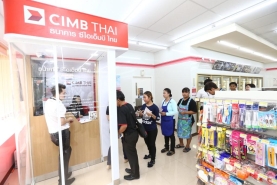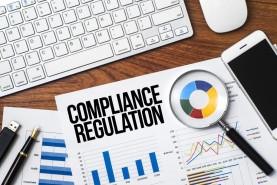Exclusive
Transaction banking veteran Expedito Garcia Jr. to share first-hand experiences on digitalisation in the Philippines
He heads the customer engagement group at Philippine Bank of Communications.
Transaction banking veteran Expedito Garcia Jr. to share first-hand experiences on digitalisation in the Philippines
He heads the customer engagement group at Philippine Bank of Communications.
One of Manila's tech and e-commerce experts to speak at the Retail Banking Forum's Manila leg
Find out more about Security Bank's e-commerce head Mark Bantigue.
In Asian trade finance, fortune favours the brave
Asian banks that step up to expand services to SMEs, embrace digitisation, and harness blockchain may find the risks well worth the rewards.
Solvency issues weighing heavily on the Singapore banking sector
But optimists insist the worst is over. When credit rating agency Fitch Ratings downgraded its sector outlook for Singapore banks to “negative” last December, it warned that softer macroeconomic conditions and a more challenging operating environment would pummel the sector in 2017. “This could place broadening pressure on asset quality and dampen earnings over the next year,” says Mark Young, head of Asia-Pacific banks at Fitch Ratings. However, Fitch Ratings maintained “stable” outlooks for Singapore banks, supported by solid credit profiles characterised by steady funding and liquidity positions, strong loss-absorption buffers, and healthy profitability. Singapore banks will be most wary of the troubled oil & gas (O&G) sector in 2017, which will likely continue to exert moderate pressure on asset quality. “Prolonged economic weakness could lead to broader asset-quality risks which may also affect small- and medium-sized businesses. However, we believe the downside risks to be manageable,” says Young. Young estimates that Singapore banks’ combined exposure of S$16.1 billion to the distressed offshore support services sector accounted for 17% of their core equity Tier 1 capital at end-September 2016. “Asset quality continues to deteriorate across banks with weakness still coming from the O&G support services,” says Young. Deteriorating solvency metrics led Moody's Investors Service to downgrade baseline credit assessments for the three Singaporean banks — DBS, OCBC, and UOB — last December. "Weakening solvency metrics — namely asset quality and profitability — have contributed to today's BCA (baseline credit assessments) downgrades to a1 from aa3,” says Eugene Tarzimanov, VP – senior credit officer, financial institutions group, Moody’s Investors Service. “The ongoing credit challenges that these banks face at home and broadly in Asia — where around 50% of their loans are — have translated into higher problem assets this year, and Moody's expects further negative pressure on asset quality in 2017 to create downward pressure on profitability due to higher credit provisions,” he adds. DBS, for example, saw its problem loan ratio rise to 1.3% at end-September 2016, from 0.9% a year ago, mainly due to asset quality issues from its offshore and marine sector exposures, including Swiber Holdings Ltd., a large Singapore-based services company that defaulted on its bond repayment and filed for judicial management in August 2016. Then in November 2016, DBS indicated that its remaining oil services exposures with potential asset quality weakness had increased to 20% of its oil service portfolio, from 13% in the previous quarter. As such, DBS expects more NPLs to surface from its oil services portfolio in the coming quarters, says Tarzimanov. Problem assets in China have also been a key stress point for Singapore banks, so they are focusing on relatively less risky top-tier state-owned enterprises, large corporations, foreign investment enterprises, and short-term trade loans. Tarzimanov says that the BCAs of the banks can face further downward pressure given three scenarios. First, if new non-performing loan formation remains elevated, pointing towards a material worsening of asset quality metrics. Second, if return on assets ratios deteriorate significantly due either to lower core profits or increased credit costs. And third, if capital buffers decline continuously over several quarters, indicating a deterioration in loss absorption buffers. Conversely, improvements in the macroeconomic conditions in Singapore and in the region as well as in the banks' financial metrics would be credit positive for the banks' BCAs. Ng Li Hiang, analyst at Maybank, shares the negative outlook on the Singapore banking sector especially in the face of worsening asset quality and how system loan growth continued into its 11th consecutive month of negative year-on-year (yoy) growth. As of September 2016, banks’ special mention and classified exposures continued to worsen, with system NPL ratio reaching 2.1%, a level not seen since June 2010, according to Ng. Softer profitability Aside from the declining asset quality, Singapore banks will also spend 2017 licking their profit wounds. “We expect banks’ profitability to weaken slightly in 2017, driven by higher credit costs and a subdued domestic lending environment,” says Young. “This is balanced, however, by their diversified revenue, with core non-interest income forming close to 40% of operating income — of which more than half represented recurring fee income over 2012-2015.”
Affluent customers now more open to deal with machines instead of bankers, says Maybank's head of group wealth management
Alvin Lee says customers' private banking experience will be more driven by automated channels.
Islamic banks turn to digital to serve underbanked Asian markets
Check out what OCBC NISP, Bank Dhofar, and CIMB Islamic have to say.
Everything you need to know about CIMB Thai's new branch inside a 7-Eleven store
Find out if the bank's tiniest branch will also operate 24/7.
Cracking the Asian banks' big data conundrum
How can banks improve the clients' banking experience without compromising data security?
UOB enables customers to use their smartphone as a digital security token
Find out how you can use the UOB Mighty Secure.
DDoS attacks: Could your bank be the next victim?
Experts reveal how banks can circumvent such attacks.
Bankers discuss branch vs digitisation, security, AML and fraud
Regulation is stalling digitisation amongst Philippine banks.
Everything you need to know about Maybank Singapore's BizMortgage Plus for SMEs
It offers financing of up to 120% of the value of the SME's property.
Hong Kong banks bear the brunt of China's crisis
Analysts remain bearish amidst weak growth in China and plans of further monetary tightening in the US.
Citi to launch digital wallet in Singapore and Australia in late November
It will also launch in the US in early 2017.
Which banks are leading in digital business banking?
Asian banks are wowing business customers with tech-powered solutions that bring increased efficiencies and regional operating expertise.
DBS CIO Neal Cross reveals three key branch banking strategies for the future
He also talks of plans of creating a digitised banking sphere for consumers.
ICBC (Asia) CEO reveals plans to capitalise on China’s Belt and Road Initiative
Jiang Yisheng wants to fully tap Hong Kong’s potential as a “super connector”.


















 Advertise
Advertise




















